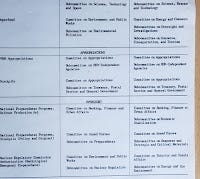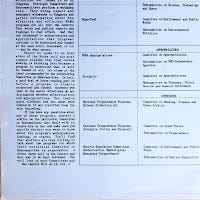The Federal Emergency Management Agency (FEMA): Floods, Failures, and Federalism, by Chris Edwards, is as important an analysis of the failure of FEMA to manage American civil defense as it was when it was written in December 1, 2014. The complete report is here.
Had its wisdom, policy recommendations, and practical analysis been followed, we would not have gone though the horror of the plandemic, whose aftermath will affect the health of average Americans for decades.
The reward for FEMA’s failure is that it has gone from a budget of $10 billion in 2014 to a FY2023 budget of $25.89 billion.
FEMA’s Predecessors
See Chris Edwards article above for a complete analysis the history of disaster response in the United States, and that of The United States once took national preparedness programs, also called civil defense, seriously. The publications list from the link above from the Online Books page by the United States Office of Civil Defense shows proof.
Here is further proof. This is an article I wrote called "Capital Hill: How FEMA Works With/Battles/Is Guided by Congress" for Hazard Monthly in June of 1984.
It describes multiple civil defense programs that were still active in the United States in 1984, such as:
National Preparedness Program, Civil Defense
National Preparedness Programs, Defense Production Act
National Preparedness Programs, Stockpile (Policy and Disposal)
Nuclear Regulatory Commission Authorization (Radiological Emergency Preparedness)
Just because the government of the United States has abandoned planning and preparing for disasters via civil defense, you cannot do the same.
FEMA’s Huge Hurricane Katrina Fail
Keep this federal agency hydraheaded monstrosity in mind as you read the following from The Federal Emergency Management Agency (FEMA): Floods, Failures, and Federalism analysis by Chris Edwards.
“There are 29 different federal agencies that have a role in disaster relief under the National Response Framework. These agencies are involved in 15 different cross-agency “Emergency Support Functions.” There is also a National Incident Management System, a National Disaster Recovery Framework, and numerous other “national” structures that are supposed to coordinate action.
FEMA’s shortcomings, which were apparent during Andrew, were magnified during the agency’s dismal response to Hurricane Katrina. Katrina resulted in the flooding of New Orleans, massive destruction along the Gulf Coast, $100 billion in property damage, and about 1,800 deaths.
Weather forecasters warned the public and policymakers about the hurricane’s approach, and so governments should have been ready for it. But they were not, and Katrina exposed major failures in disaster preparedness and response by FEMA and other federal, state, and local agencies.
Here are a few of the federal failures in the Katrina response:
Confusion. Key officials in FEMA and DHS were not proactive, they gave faulty information to the public, and they were not adequately trained to carry out their roles. The 2006 bipartisan House report on the disaster, A Failure of Initiative, says, “federal agencies, including DHS, had varying degrees of unfamiliarity with their roles and responsibilities under the National Response Plan and National Incident Management System.” The report says there was “general confusion over mission assignments, deployments, and command structure.” One reason that FEMA was confused was that its executive suites were full of political appointees with little disaster experience. That has been the rule, not the exception with FEMA, which “has often been staffed with executives who were not highly regarded in the field of disaster relief.”
Failure to Learn. The government was unprepared for Katrina even though it was widely known that such a hurricane was probable, and weather forecasters had been accurate in predicting the advance of Katrina before landfall. A year prior to Katrina, government agencies had performed a simulation exercise—“Hurricane Pam”—for a hurricane of similar strength hitting New Orleans, but governments “failed to learn important lessons” from the exercise.
Communications Breakdown. The House report found that there was “a complete breakdown in communications that paralyzed command and control and made situational awareness murky at best.” Agencies could not communicate with each other due to equipment failures and a lack of system interoperability. These problems occurred despite the fact that FEMA and predecessor agencies have been giving grants to state and local governments for emergency communication systems since the beginning of the Cold War.
Supply Failures. Some emergency supplies were prepositioned before the storm, but there was nowhere near enough.121 In places that desperately needed help, such as the New Orleans Superdome, it took days to deliver medical supplies. And FEMA wasted huge amounts of supplies. It delivered millions of pounds of ice to holding centers in cities far away from the Gulf Coast. FEMA sent truckers carrying ice on wild goose chases across the country. Two years later, the agency ended up throwing out $100 million of ice unused. FEMA similarly gave away $85 million worth of household goods purchased for victims that sat unused in warehouses for two years. The agency paid for 25,000 mobile homes costing $900 million, but these went almost totally unused due to FEMA’s own regulations that such homes cannot be used on flood plains, which is where most Katrina victims lived.
Indecision. Indecision plagued government leaders in numerous areas, such as the deployment of supplies, medical personnel, and other items. Even the grisly task of body recovery after Katrina was slow and confused. Bodies went uncollected for days “as state and federal officials remained indecisive on a body recovery plan.” FEMA waited for Louisiana to make decisions about bodies, but the governor of Louisiana blamed FEMA’s tardiness in making a deal with a contractor. Similar problems of too many bureaucratic cooks in the kitchen hampered decision making in areas such as organizing evacuations and providing law enforcement resources to Louisiana. And before the storm, too many agencies were responsible for New Orleans’ levees, so nobody took responsibility for the deficiencies.
Fraud and Abuse. Free-flowing Katrina aid unleased a torrent of fraud and abuse. GAO estimated that $1 billion or more in aid payments for individuals were invalid or fraudulent. Other estimates put the total waste at up to $2 billion. An Associated Press analysis found that “people claiming to live in as many as 162,750 homes that did not exist before the storms may have improperly received as much as $1 billion in tax money.” A New York Times investigation concluded: “Among the many superlatives associated with Hurricane Katrina can now be added this one: it produced one of the most extraordinary displays of scams, schemes and stupefying bureaucratic bungles in modern history, costing taxpayers up to $2 billion.”
Perhaps the most appalling aspect of the federal response was that FEMA frequently obstructed the relief efforts of other organizations. Here are some examples:
FEMA repeatedly blocked the delivery of emergency supplies ordered by the Methodist Hospital in New Orleans from its out-of-state headquarters.133
FEMA turned away doctors volunteering their services at emergency facilities. Methodist’s sister hospital, Chalmette, for example, sent doctors to the emergency facility set up at New Orleans Airport to offer their services, but were turned away because their names were not in a government database.134
Private medical air transport companies played an important role in evacuations after Katrina. But FEMA officials provided no help in coordinating these services, and they actively blocked some of the flights.
FEMA “refused Amtrak’s offer to evacuate victims, and wouldn’t return calls from the American Bus Association.” Indeed, both the Motorcoach Association and the American Bus Association could not get through to anyone at FEMA to offer help for evacuations.
The Red Cross was denied access to the Superdome in New Orleans to deliver emergency supplies.
FEMA turned away trucks from Walmart loaded with water for New Orleans, and it prevented the Coast Guard from delivering diesel fuel.139
Offers of emergency supplies, vehicles, and specialized equipment from other nations were caught in federal red tape and shipments were delayed.140
A New York Times article during the disaster said there was “uncertainty over who was in charge” and “incomprehensible red tape.”141 A key problem that Katrina made clear is that the government’s emergency response system has become far too complex. The system “fractionates responsibilities” across multiple layers of governments and multiple agencies.
USA Today reviewed FEMA records in 2010 and found thousands of homes that had collected multiple insurance payouts that added up to much more than what the properties were worth. One Mississippi home valued at $69,900 has flooded 34 times since 1978, and the owner has received $663,000 in NFIP payments over the years. Any private insurance company would cancel coverage on individuals like this who are taking high risks, but the NFIP does not.
Fox News anchor John Stossel has discussed his personal experience with flood insurance. He built a beach house in a risky location along the ocean on Long Island in 1980. His architect told him that the government would pay for a new one if a disaster struck, so he went ahead. Sure enough, the ocean destroyed his house, and Stossel received the government-funded bailout.
As Stossel has noted, the NFIP is welfare for the well-to-do. A 2010 study looked at claims data over a 10-year period and concluded that “the benefits of the NFIP appear to accrue largely to wealthy households concentrated in a few highly-exposed states.” One reason is that many properties along U.S. seacoasts are vacation residences for well-heeled individuals.
FEMA funding for disaster aid to states and individuals should be ended and flood insurance privatized. Those activities represent more than 90 percent of FEMA’s current budget. Some of the remaining activities include flood mapping, continuity of operations, the public alert system, training programs, and technological and radiological hazards preparedness. Those activities should be moved to other agencies, and FEMA closed down.
Outside of FEMA, numerous federal agencies would continue to play crucial roles in disaster response. Those include the Coast Guard, the active duty military, the agencies that prepare for pandemics and other health threats, and the agencies that handle such threats as terrorism, cyber attacks, and biological and chemical agents.
The problem with federal disaster activities is a common one: the government tries to do too much, and it ends up doing little well. In government, less is nearly always more. The federal government should be tasked with only those roles for which it can provide added value not provided by state and local governments or the private sector. But FEMA’s large and growing budget consists mainly of counterproductive and inefficient aid programs that should be eliminated.”
What You Can Do
As demonstrated by the Katrina hurricane example, you are on your own in the event of a natural or manmade disaster. FEMA is not coming to your rescue.
But there is hope.
As civil defense is as old as the Bible, read your Bible for background. The best civil defense planning and preparedness knowledge is found in the Bible. Study it and learn from the mistakes of the past. Seek wisdom. Practice the virtues. Avoid sin. Pray always. Know God. Depend on God. Save in the days of abundance for the days of famine. Love and protect your family.
BIBLE = Best Information Before Leaving Earth.
Our enemies all have excellent civil defense programs. Neutral Switzerland has the best one. Study what Switzerland does to know what we need to do.
If the federal government whose primary reason to exist is to keep us prepared and protected is not doing so in the area of civil defense, that is even more reason for you to do so.
We all leave this earth one day, yes, but while here we have a holy obligation and sacred duty to protect our families, friends, neighborhoods, states, and country. Civil defense is one of many ways to do that. Please join me in that holy and vital task.
One way is to get to go to the American Civil Defense Association (TACDA.ORG) and educate yourself about civil defense for the past 60 years in the United States. We are a charity and basic memberships to TACDA are free.
I have been a volunteer on the board of directors and vice president of TACDA for 15 years. In that role, I have written over a dozen civil defense articles in our Journal of Civil Defense to help American families prepare and survive.
For two months I uploaded decades of TACDA Journal of Civil Defense articles to our website. You will find, if you read them, that the same issues occur over and over. My most recent article is Children and Civil Defense.
For over two decades, I have written this poetslife civil defense blog. Like TACDA, it is also aimed at educating American families for how to prepare for and survive using civil defense skills. Now I continue this mission on Substack.
I started this blog to help my family and to help other Americans find out about their MIA loved ones when the government was not helpful. But the core mission evolved into civil defense. (I think my Uncle Frank may have had something to do with that.)
I assure you whatever time you spend learning civil defense will give you a better life and save your life, your children's, and your grand children's. To make it easy for you, read my civil defense Substack.
So, ultimately, civil defense is about loving your family, friends, neighbors, and country and doing the work necessary to keep them save. The scale of the threat has increased over the years, as here. but our effort to meet the threat through widespread civil defense education has fallen behind.
The cyber threat from the Communist Chinese Party (CCP) is one of the many fronts they are using to take down the United States. It is a civil defense threat that could be met through widespread civil defense education. The CCP unrestricted warfare doctrine is real. They advance it daily while the West is preoccupied with nonsense.
We know the challenge and the solution.
The question is whether we have the will to meet the threat to ensure the freedom of our loved ones, now and in the future.










By now, it must be clear for every thinking American that whenever one would suspect idiocy, it's actually room left for corruption.
The FEMA budget going up from $10b to $24b must be due to the preparations of "Green Zones":
https://rayhorvaththesource.substack.com/p/walmarts-are-prepared-for-becoming